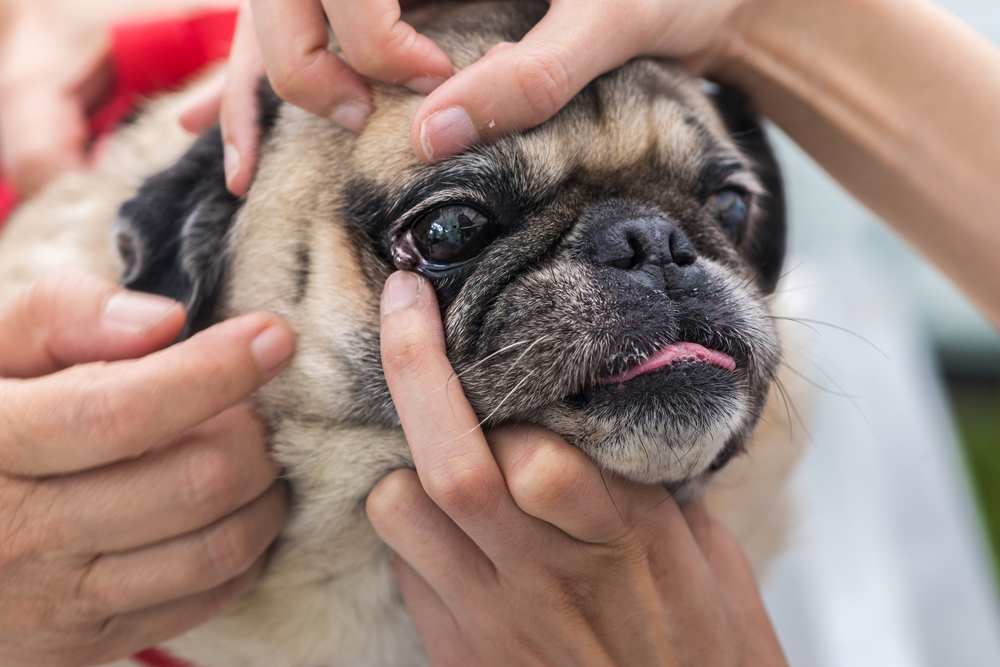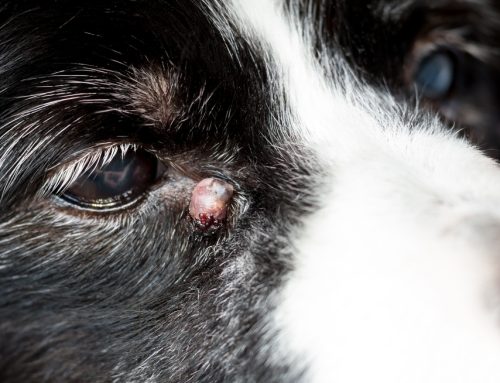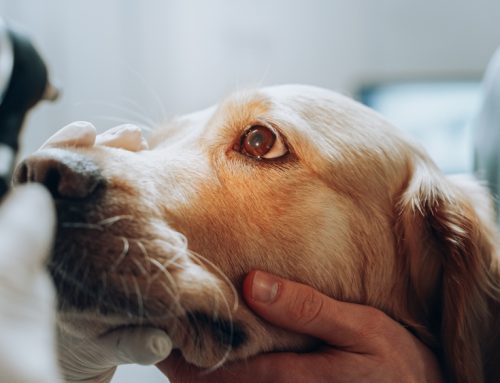Regular veterinary care is important for your pet’s overall health, and that includes their eyes. Eye problems can strike at any age, but annual ophthalmic exams can detect them in their early stages, allowing your veterinarian to begin treatment sooner. Your primary veterinarian can perform a basic ophthalmic exam, but they typically cannot evaluate the eyes in detail. Our Veterinary Vision Center team is fully equipped to perform a thorough annual eye exam, and can provide continued care for ophthalmic conditions.
What is a pet ophthalmic exam?
The ophthalmic exam is a thorough examination of your pet’s eyes, eyelids, surrounding tissues, and cranial nerve function. Your veterinary ophthalmologist will perform several diagnostic tests and use hand-held lenses, lights, and microscopes to evaluate the eyes. They will also evaluate your pet’s vision by assessing reflexes and light responses, and how well your pet navigates in light, dark, and unfamiliar environments. The exam is performed in dimmed light in a calm, quiet area, and is not painful or stressful.
Parts of the pet ophthalmic exam
Similar to your own eye doctor, your pet’s veterinary ophthalmologist uses sophisticated equipment and technology, along with basic tests, to evaluate the eyes as a whole.
- Basic diagnostic testing — The following three tests, which may be performed by the veterinarian or veterinary technician, assist in your pet’s overall diagnosis.
-
- Schirmer tear test — This test uses small paper strips placed under the lower eyelids for 60 seconds to measure your pet’s tear production. Low tear production indicates “dry eye” (i.e., keratoconjunctivitis sicca). The test can also measure treatment response in affected pets.
- Tonometry — Tonometry uses a variety of instruments to measure pressure inside the eye. You might know this as the “air puff” test at your eye doctor, although that particular instrument is not used in pets. High intraocular pressure is painful and indicates glaucoma, while low pressure may signal an eye inflammation called uveitis.
- Fluorescein stain — This fluorescent green dye, which is applied to your pet’s eyes as an eyedrop or with a paper strip, checks for the health of the clear front part of the eye known as the cornea. The dye will stick to unhealthy or ulcerated areas, allowing identification by your veterinary ophthalmologist. The stain also allows evaluation of the tear ducts and tear film health.
- Vision assessment and reflexes — Your veterinary ophthalmologist will assess response to hand gestures (i.e., the menace response), object motion, and bright lights, the ability to blink and move the eyes and facial muscles normally, and may test navigation skills using a maze test.
- Slit lamp biomicroscopy — The slit lamp is essentially a hand-held microscope that your veterinary ophthalmologist uses to look in detail at the eyelids, conjunctiva, and front parts of the eye. This part of the exam is key for diagnosing the majority of ocular conditions. The slit lamp is also used as a light source for assessing pupil responses to light.
- Fundic exam — The last part of the exam uses a hand-held lens and a headlamp to focus light on the back of your pet’s eyes, to examine the retina, retinal vessels, and optic nerve. Pupil dilation with an eyedrop may be necessary.
Why pet ophthalmic exams are important

Your pet can be born with congenital eye problems, or can manifest a genetic or age-related issue later in life. Untreated eye conditions in pets often affect vision, or cause discomfort, pain, and a reduced quality of life. An annual eye exam with a veterinary ophthalmologist can establish your pet’s baseline eye health, and monitor for changes with each visit. Eye conditions may or may not be manageable with medications or surgery, but early diagnosis typically allows for the best possible outcomes. Establishing a relationship with a veterinary ophthalmologist will also allow your pet to receive prompt emergency treatment, if needed, for any eye conditions that pop up suddenly.
In addition to keeping your pet’s eyes as healthy as possible, eye exams can provide important clues to your pet’s overall health. For example, inflammation inside the front part of the eye (i.e., uveitis) can be caused by infection, cancer, or immune problems, cataracts occur commonly in diabetic patients, and retinal thinning can signal high blood pressure. If only the eyes are affected, an annual exam can detect a major systemic issue before progression to a more serious stage.
Annual eye exams can provide multiple benefits for your pet, and our Veterinary Vision Center team is standing by to assist with your pet’s ophthalmic needs. Call us to schedule your pet’s annual eye exam, or with any questions regarding your pet’s ophthalmic care.







Leave A Comment